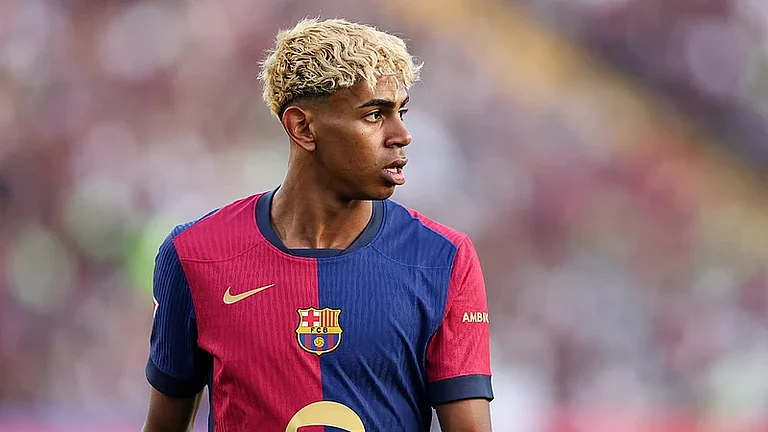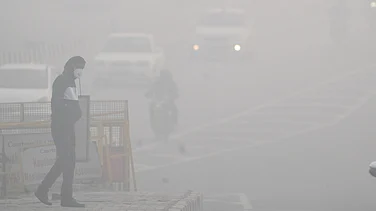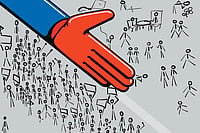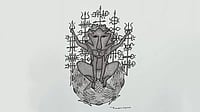At the time, my father had been transferred to Siwan district of undivided Bihar. He worked in the police department and we moved into a government quarter in the police line. We lived on the first floor and another Adivasi family lived in the flat below. When their daughter was born, my mother often visited them. They were Adivasi Oraon like us and used to speak the Kurukh language. My mother would also give massage to their young baby girl. One day, the girl fell sick. My mother went to advise them based on her knowledge and experience. She also suggested that they take her to the doctor. However, they stopped my mother from entering their house. Later, we heard that they had started calling my mother a dayan (witch) behind our back. They thought my mother had done something sinister to make their daughter fall sick.
Thus, we first heard the word dayan being used for our mother. This was hurtful. The word was not just insulting but also scary for a woman who used to help everyone in the neighbourhood, even took care of their children and shared sorrows and joys with other women. We had been subjected to the slur not by any other community but our own.
After the new Jharkhand state was formed, we returned to our village in West Singhbhum. Ma started living in the village, while I and my siblings started studying in the nearby Chakradharpur. During holidays, we would visit our village from the boarding school. It is situated on the banks of the Koel River. We observed that the villagers would not go towards the river after dark. Women would say, “A chudin/chudail (female evil spirit) stays on the kusum tree (Ceylon oak) near the river. Last night, someone was returning to the village drunk and a long shadow started following him. The chudin jumped in the river when the man told it, ‘Don’t follow me, I am going on my way.’ It made a huge splash, which was also heard by others in the village.” Such stories abound and find traction among the villagers.
The Benign Dwarfs of the Granary
After returning to the village during vacations, we would also visit our aunt’s house on the other side of the mountains. In those days, there were no paved roads to the village. One could reach there only by taking mud trails through the mountains. There, we heard many new stories. These were tales for us, but the locals fully believed them to be true . For instance, we heard a tale similar to the famous fairytale of ‘Snow White and the Seven Dwarfs’. We were told that our mausi’s (aunt’s) house in the village was haunted by male and female dwarfs and that they were actually spirits. According to the villagers, they lived in the bhandarkona (granary) there and they heard them laugh from the room, which never had a dearth of grain. My aunt’s house always had sufficient grain and people believed this was due to the presence of those dwarfs. Though we never saw these mythical creatures, we kept hearing about them for years.
Each village and family carries these kinds of tales, which become part of people’s belief over a period of time. The nature-worshipping Adivasi community often sees natural disasters as the result of evil forces. Disease, epidemic and untimely death are often linked to the evil forces of nature. The community worships the feminine as a deity and, therefore, evil forces are also linked to women. So, it is often a woman who is blamed for diseases or someone’s sudden death and sometimes she is even killed for this. Often, this phenomenon descends into mob lynching.
The lack of a scientific temper, education and health services in the area are also probable causes of keeping beliefs such as dayan-bisahi alive. In the villages, often a lack of understanding about diseases, or inability to get treatment due to lack of financial resources, leads to people finding solace in blaming someone else for witchcraft. As a result, the powerful oppress the weak and, at times, it becomes a game of power.
Some Case Studies
Shakuntala Oraon, a schoolteacher in the Sisai block of Gumla district, says that recently her mother was called a dayan by some villagers. Shakuntala immediately informed the police, who arrested the accused and sent them to jail. The villagers came to her house and asked her to withdraw the complaint. However, Shakuntala scolded them for not supporting her mother when she was branded a witch and instead were trying to save the culprits. She says that often villagers initiate the dayan-bisahi rumours out of jealousy or personal enmity. These accusations, subsequent harassment and brutal killings are the result of blind belief, which does not listen to reason.
In the Bukma village of Gumla district, Jayram Oraon is the bhagat or traditional priest, who performs the rituals for nature-worshipping Sarna Advasis and also serves as the pradhan or village head. He says, “The dayan-bisahi cases often have sheer jealousy and enmity at their core. Nobody accuses someone living far away of being a dayan. They often name someone nearby, often a relative, of witchcraft due to some personal feud or hatred. These days, even elderly men are being targeted.”
Meghnath, a documentary filmmaker from Jharkhand, says, “The lack of health services are a major factor behind the witch murders in Adivasi areas, which is often ignored. Adivasi women suffer the most due to the lack of healthcare and it is sad that they become the victims of these killings.
After the murders, some Adivasis go to the police station to surrender and inform about the incident and the circumstances in which they committed the act. Meghnath says that if they had thought they were criminals, they would have fled or hidden from the police. The lack of healthcare in remote areas pushes them to these brutal killings, he adds. If healthcare services are improved, it would definitely help reduce these incidents.
Sanjay Bosu Mallick, the author of Dayan Gatha (The Witch’s Tale), says “The Adivasi community is not patriarchal. Even now, the community has not fully adopted the power structure. However, under the influence of the dominant culture, the authority of men is gradually increasing. The dayan killings are usually a way for men to murder women.”
An Adivasi journalist from Jharkhand says that everyone in his family is educated and employed in decent government jobs. They live in cities. Yet when his father died sometime back, one of his uncles started calling his mother a witch. This was clearly an attempt to disinherit her of the property.
The growing dominance of men in Adivasi society uses the label dayan to dispossess women of power, property and land. Here, being educated or not, or following a particular religion, does not make difference. This has become part of people’s psyche there. It appears to be a kind of power game within the community.
(This appeared in the print edition as "A Power Game at Play")
(Views expressed are personal. Translated from Hindi by Iqbal Abhimanyu)
Jacinta Kerketta is a young Oraon Adivasi poet, writer and freelance journalist from Jharkhand

























